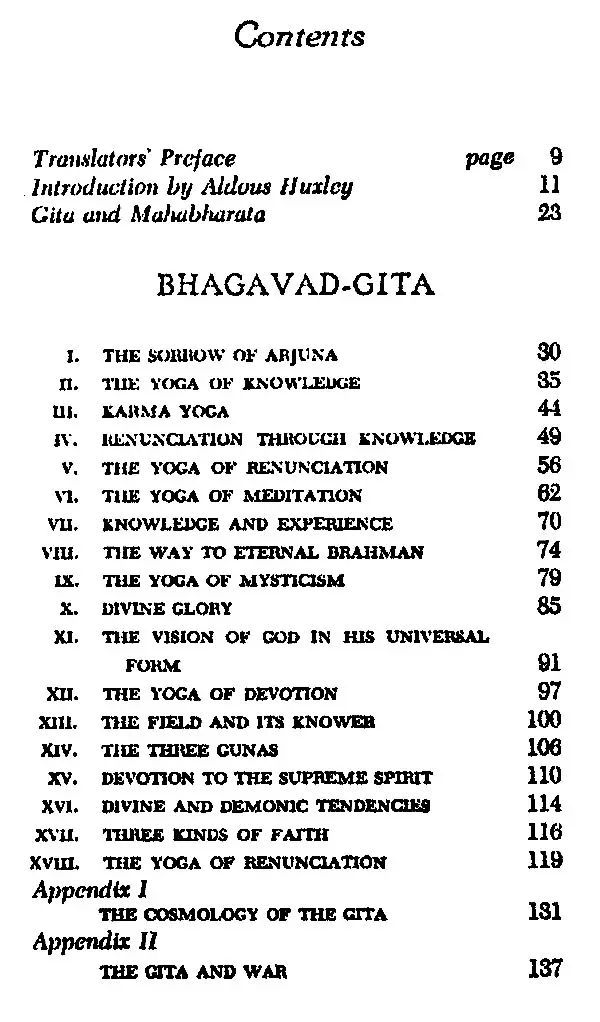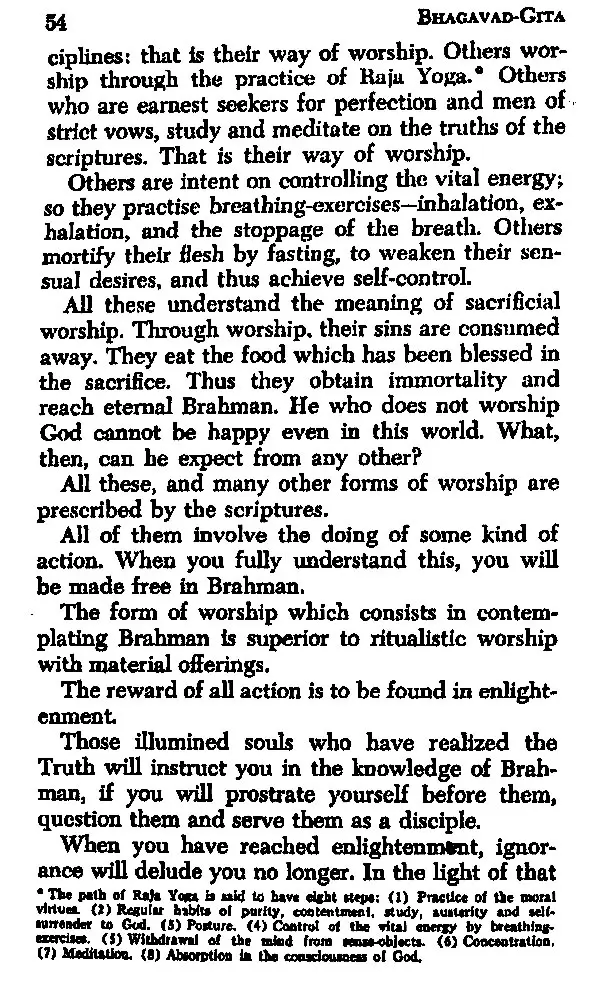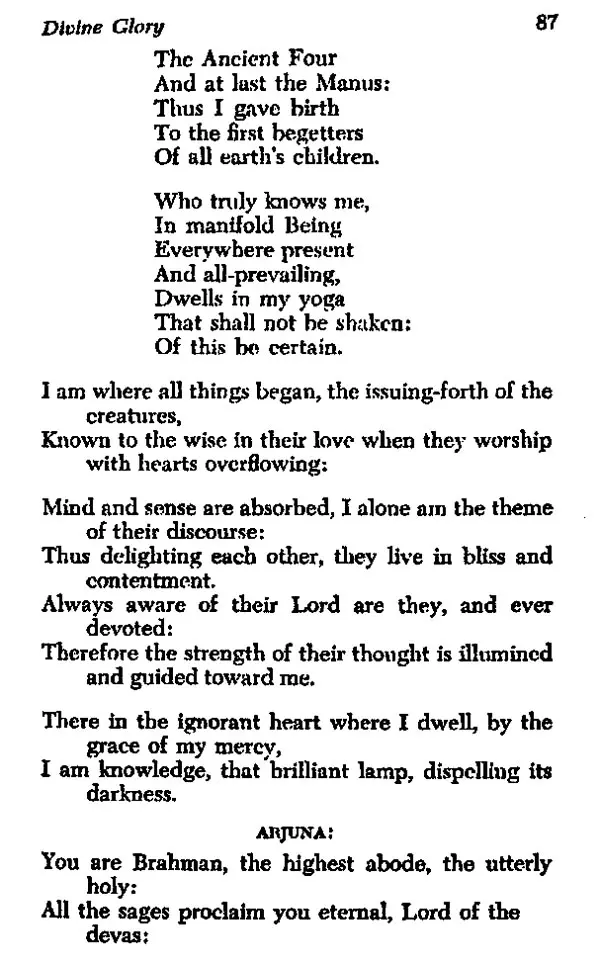
The Song of God Bhagavad-Gita
Book Specification
| Item Code: | UAM746 |
| Author: | Swami Prabhavananda & Christopher Isherwood |
| Publisher: | Kalpaz Publications |
| Language: | English |
| Edition: | 2017 |
| ISBN: | 9789351287162 |
| Pages: | 143 |
| Cover: | PAPERBACK |
| Other Details | 8.50 X 5.50 inch |
| Weight | 170 gm |
Book Description
NOWADAYS, it is becoming fashionable to translate the world's great books into some form of Basic English, or everyday speech. The Gita does not easily lend itself to such treatment. The Sanskrit in which it is written differs radically from modern English. It is compressed and telegraphic. It abounds in exact philosophical and religious terms. Its frame of reference is a system of cosmology unfamiliar to western thought. And indeed, it would be hard to evolve any uniform English style, modern or ancient, in which the Gita could be satisfactorily rendered. For the Gita, regarded simply as a piece of literature, is not a unity. It has several aspects, several distinct tones of voice. Let us consider each of them in turn.
First, the Gita may be regarded as part of an epic poem. It is all in verse. The first chapter is pure epic, continuing in the mood of the Mahabharata itself. The shouting of warriors, the neighing of horses and the outlandish names of chieftains are still sounding in our ears as the dialogue between Krishna and Arjuna begins. To translate this epic prologue as though it belonged to the philosophical discourse which follows would be to cut the Gita right out of its historical setting and deprive it of its vivid local colour.
MORE THAN twenty-five centuries have passed since that which has been called the Perennial Philosophy was first committed to writing; and in the course of those centuries it has found expression, now partial, now complete, now in this form, now in that, again and again. In Vedanta and Hebrew prophecy, in the Tao Teh King and the Platonic dialogues, in the Gospel according to St. John and Mahayana the ology, in Plotims and the Areopagite, among the Persian Sufis and the Christian mystics of the Mid dle Ages and the Renaissance-the Perennial Philos ophy has spoken almost all the languages of Asia and Europe and has made use of the terminology and traditions of every one of the higher religions. But under all this confusion of tongues and myths, of local histories and particularist doctrines, there remains a Highest Common Factor, which is the Perennial Philosophy in what may be called its chemically pure state. This final purity can never, of course, be expressed by any verbal statement of the philosophy, however undogmatic that statement may be, however deliberately syncretistic. The very fact that it is set down at a certain time by a certain writer, using this or that language, automatically im poses a certain sociological and personal bias on the doctrines so formulated. It is only in the act of con templation, when words and even personality are transcended, that the pure state of the Perennial Philosophy can actually be known. The records left by those who have known it in this way make it abundantly clear that all of them, whether Hindu, Buddhist, Hebrew, Taoist, Christian or Mohammed an, were attempting to describe the same essen tially indescribable Fact.
Book's Contents and Sample Pages











